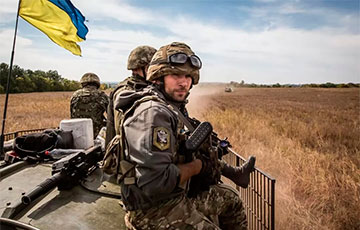Russia’s Defeat On Kharkiv-Izyum Line: New Front Map Published
12- 9.09.2022, 11:51
- 52,466

The closeness of the Armed Forces of Ukraine to Kupyansk causes panic among the Russians.
While the Armed Forces of Ukraine have achieved significant success in the Kharkiv region and are moving towards Kupyansk, a key hub for Russian logistics and supply of troops in the Izyum direction, unprecedented criticism of military leaders and the leadership of Russia is growing among Russian military bloggers.
This is stated by the American Institute for the Study of War (ISW). in its new report on the results of September 8.
According to its experts, after the past day, Ukrainian forces probably took up positions within 15 km from Kupyansk. The Russian rear in the Kharkiv region “is now vulnerable to further Ukrainian offensive”, and the Armed Forces of Ukraine have a chance to return control of Kupyansk within the next 72 hours (three days), according to ISW. “The relatively high speed of the advance of the Ukrainian troops and the proximity to Kupyansk are causing panic in the Russian rear areas,” the authors of the report state.
The ISW also confirms the liberation of Balakliya, noting that the message of the Russian Ministry of Defense about the alleged strike on the Ukrainian warehouse at this point only indirectly proves that the city came under the control of the Armed Forces of Ukraine.
Ukrainian successes on the Kharkiv City-Izyum line are creating fissures within the Russian information space and eroding confidence in Russian command to a degree not seen since the notorious Russian defeat near Bilohorivka (Luhansk region) in May, 2022. Since then, no criticism of such “tone and scale” has been recorded on the part of Russian propagandists.
Ukrainian military officials announced that Ukrainian forces advanced 50km deep into Russian defensive positions north of Izyum on September 8, given the Russian MoD’s silence, prompted many Russian milbloggers to criticize and debate Russian failures to retain control over the city of Balakliya, the ISW experts note. Among the critical remarks to the military leadership of Russia, voiced by the bloggers, were the following:
Rosgvardia units operating in the area did not coordinate their defenses or have sufficient artillery capabilities to prevent Ukrainian counterattacks in the region;
Russian command failed to prepare for “obvious and predictable” Ukrainian counteroffensives, according to Russian propagandists;
Ukrainian forces have “completely outplayed” the Russian military command in Balakliya.
“The Russian MoD repeated its Bilohorivka information mistake by failing to acknowledge the situation around the Kharkiv region and establish a desired narrative, leaving milbloggers to fill this gap with criticism of Russian forces,” the ISW experts stress. The Russian MoD only claimed to have destroyed a Ukrainian ammunition depot in Balakliya.
The ISW analysts provide three takeaways of the above:
The Russian MoD struggles to address unexpected Ukrainian operations because its information strategy relies on portraying the Russian invasion of Ukraine as an “easy and faultless operation”. This promotes a lack of situational awareness within the Kremlin and the Russian media space.
The Russian MoD needs a significant amount of time to develop and spread false narratives in the Russian information space. The Kremlin and Russian MoD successfully did so prior to the long-awaited Ukrainian counteroffensive in the south, and milbloggers largely followed the Kremlin’s line. The Russian MoD failed to have a narrative ready for Ukrainian operations in Kharkiv region.
Milbloggers will share and promote footage and imagery of fighting unfavorable to Russian forces that will dominate coverage in the Russian information space if the Russian MoD does not provide its own media.
Other takeaways of the ISW experts for the past day:
Ukrainian forces will likely capture Kupyansk in the next 72 hours, severely degrading but not completely severing Russian ground lines of communication (GLOCs) to Izyum (and yet the loss of Kupyansk will hit the ability of the Russian Federation to support both offensive and defensive operations);
Ukrainian forces are continuing to target Russian GLOCs, command-and-control points, and ammunition depots in the Kherson region;
Russian occupation authorities continue to intensify crackdowns and filtration measures to curb Ukrainian partisans and pro-Ukrainian saboteurs;
Russian forces conducted limited ground attacks across the Eastern Axis.










